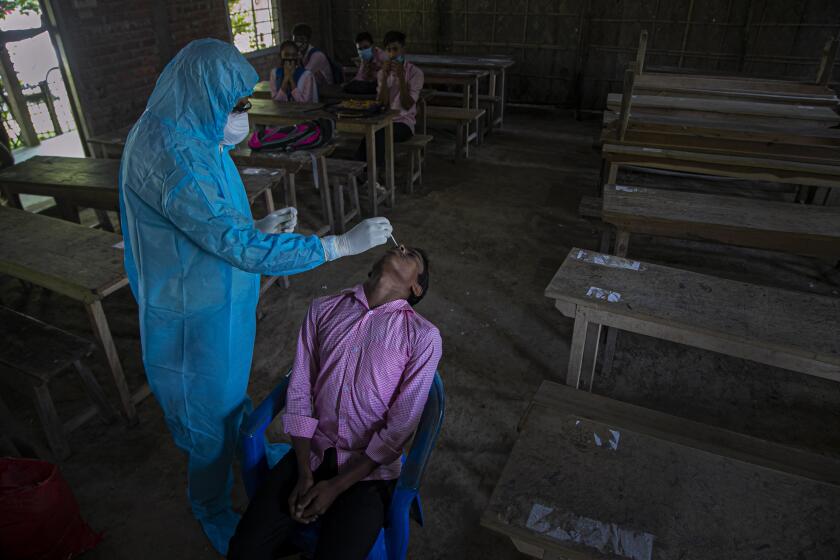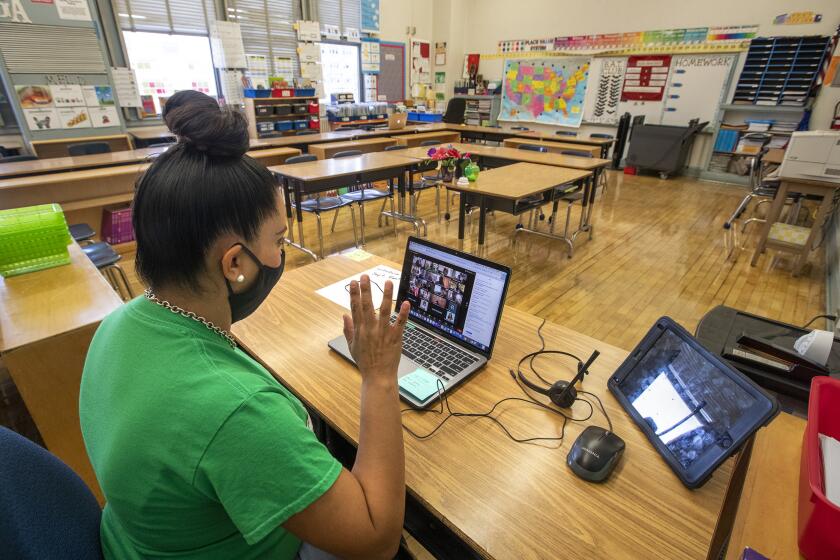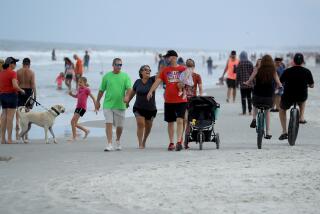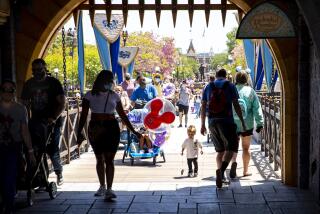Disneylandâs push to reopen sets up critical moment in Californiaâs coronavirus fight
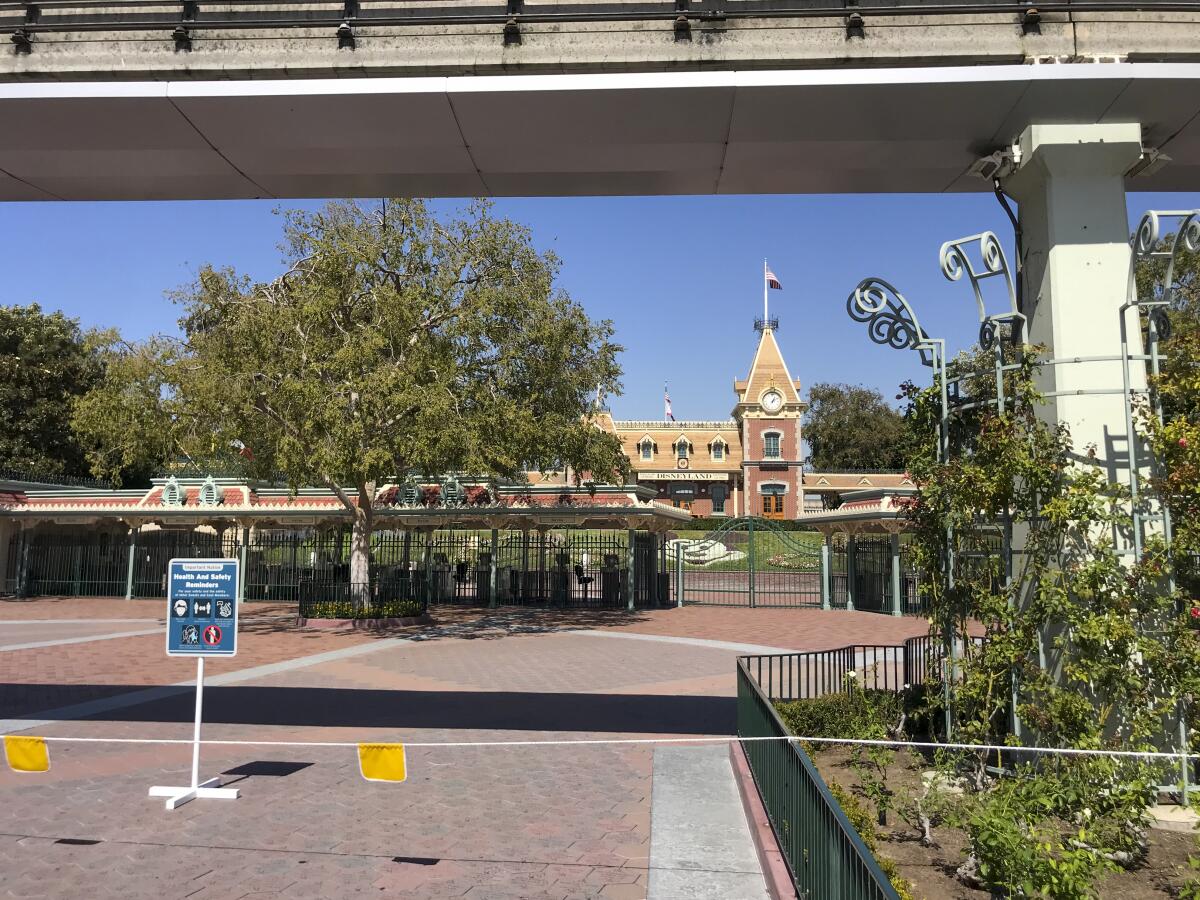
A growing chorus of businesses small and large has been desperately lobbying California officials to reopen this fall as they struggle to survive after months of coronavirus shutdowns.
This week, they got an ally with undeniable star power.
The Walt Disney Co., one of the worldâs largest entertainment companies, partially blamed Californiaâs strict reopening rules for massive layoffs in its theme park division after trying unsuccessfully to get officials to allow the gates of Disneyland to swing open again.
Disneyâs blunt criticism is putting more pressure on Gov. Gavin Newsom and health officials at a critical moment.
The stateâs first attempt at reopening led to a major surge in COVID-19, and Newsom has vowed to move more cautiously this time and listen only to the science. His reopening plan omits theme parks altogether, though officials said guidelines will be released this week.
Bradley Pollock, chairman of the Department of Public Health Sciences at UC Davis, said waiting on the state for guidance is undoubtedly frustrating for theme park operators, but that Newsom and his staff are confronting an extremely difficult calculus in determining the size and pace of reopenings.
Keeping businesses closed deals a major blow to the economy and to large swaths of society that may lose their livelihoods, he said. But any reopenings will increase interactions between people, lead to more cases of the coronavirus, and more deaths, he said.
âItâs not a question of if, but rather, how much?â he said. âThe virus hasnât changed. ... When you have people who can gather physically closer together, you increase the risk. Is it worth it?â
Complicating matters is that some states are beginning to see a new surge in coronavirus cases that experts fear could eventually arrive in California. That would come at the same time as a flu season already expected to make COVID-19 more difficult to manage.
In some parts of the state, including San Francisco and other, more rural, areas, businesses are beginning to reopen as cases plummet. But itâs been slower going in Southern California, frustrating business owners and some local officials.
A new study of how COVID-19 spreads through communities highlights the role of super-spreaders in passing along the virus.
Los Angeles County announced Wednesday that shopping centers and nail salons will be allowed to resume indoor operations with limited capacity over the next 10 days. But there has been much debate about whether the region is reopening too quickly given the health risks, or not quickly enough given the economic woes.
Disney announced that it would lay off 28,000 staff members across its parks, cruises and retail stores because of the pandemic. Though the cuts affect employees across the U.S., executives cited in their decision Californiaâs âunwillingness to lift restrictions that would allow Disneyland to reopen.â
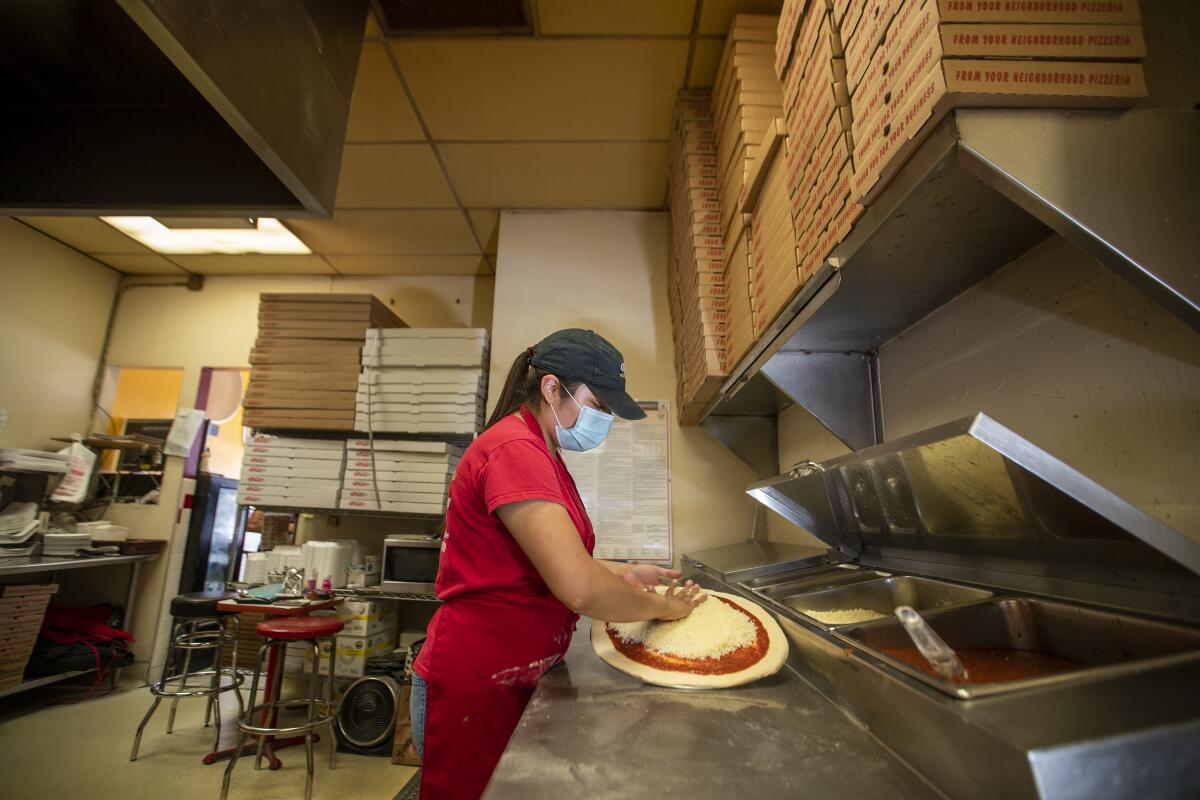
The pushback from the corporation is part of a much larger, growing pressure that communities around California are facing as businesses grapple with a make-or-break fall after months of slashed revenue.
Jocelyn Campos said her familyâs restaurant, a mile from Disneyland and typically a popular spot with park visitors, can probably survive only six more months with business down by 40% since the shutdown.
âWeâre going to do everything in our power, but all we can do is cross our fingers that the customers return,â Campos said.
Disney, one of the largest employers in the state, has been severely hobbled by the coronavirus health crisis. In April, the company said it was furloughing more than 100,000 workers after the pandemic forced the company to shut down its theme parks. Disney also cut expenses, slashed executive pay and suspended major projects to save money.
In June, Disneyland announced plans to reopen but Newsom and his advisors persuaded park officials to hold off.
Disney Executive Chairman Bob Iger has been in direct contact with Newsom throughout the outbreak and is a key member of Newsomâs Task Force on Business and Jobs Recovery, which was created in April to guide the stateâs financial recovery and create jobs.
However, the prolonged shutdown became financially unsustainable for Disney, said Josh DâAmaro, chairman of Disneyâs parks, experiences and products segment, in a memo to staff on Tuesday.
âAs heartbreaking as it is to take this action, this is the only feasible option we have in light of the prolonged impact of COVID-19 on our business,â DâAmaro said.
Dr. Mark Ghaly, Californiaâs Health and Human Services secretary, said the Newsom administration expects to release guidance this week for the reopening of theme parks across the state. The extent of reopenings may depend on the severity of the COVID-19 pandemic in the counties where they are located.
State public health officials have been meeting with amusement park representatives since the outbreak first began, with recent talks focused on the complex natures of those attractions, which have drawn millions of visitors annually.
Ghaly noted that initially, Disneyland and other parks were not expected to open until the final stage of the pandemic recovery, when herd immunity was established.
âWhen you think about an amusement park, thereâs components that are indoor and outdoor and thereâs different things, like thereâs water rides,â Ghaly said Wednesday. âPeople usually come to the parks for weekends or weeks. Itâs a family event. Youâre in hotels and restaurants. If you keep your guard up while youâre in the park, you may take your guard down when it comes to transmission in all these related activities.â
Ghaly said the announced layoffs at the Walt Disney Co., as well as the economic toll on other businesses across the state, have weighed heavily on every decision made by both the Newsom administration and local public health officials.
âNobody has a playbook on this,â Ghaly said. âIdeally, the way that we look at this is that our choices around controlling transmission are in fact, helping us set up for more success moving our economy forward.â
But not everyone is treating theme parks this way. In July, Walt Disney World in Orlando, Fla., was allowed to reopen. However, that Florida allowed Disney World to reopen should not be taken as a sign that Newsom should charge forward, Pollock said.
âThey seem to have more tolerance for outbreaks,â Pollock said of Florida. âDo I blame the governor here for being more conservative? No.â
Experts say many students in kindergarten through third grade will struggle with online school. Here are some ideas to help make virtual learning work as well as you can.
He added, however, that the opening of Disney World serves as a ânatural experimentâ testing whether the theme park will become a hotbed for cases. So far, that hasnât appeared to be the case, he said.
âNothing helps explain risk like history and the facts. So they opened up their theme parks, they did it under very carefully controlled conditions, and there hasnât been a spike,â he said. âSo I think that theoretically, they may be able to reopen safely here.â
Glynndana Shevlin, who has worked at the Disneyland Resort for 32 years, said she felt shocked by news of the layoffs. Her union, Unite Here Local 11, expects 950 of its 3,000 members who work at the resort to be laid off on Nov. 1.
âIâm in limbo right now,â she said. âOf course we want to reopen and work, but it has to be done safely.â
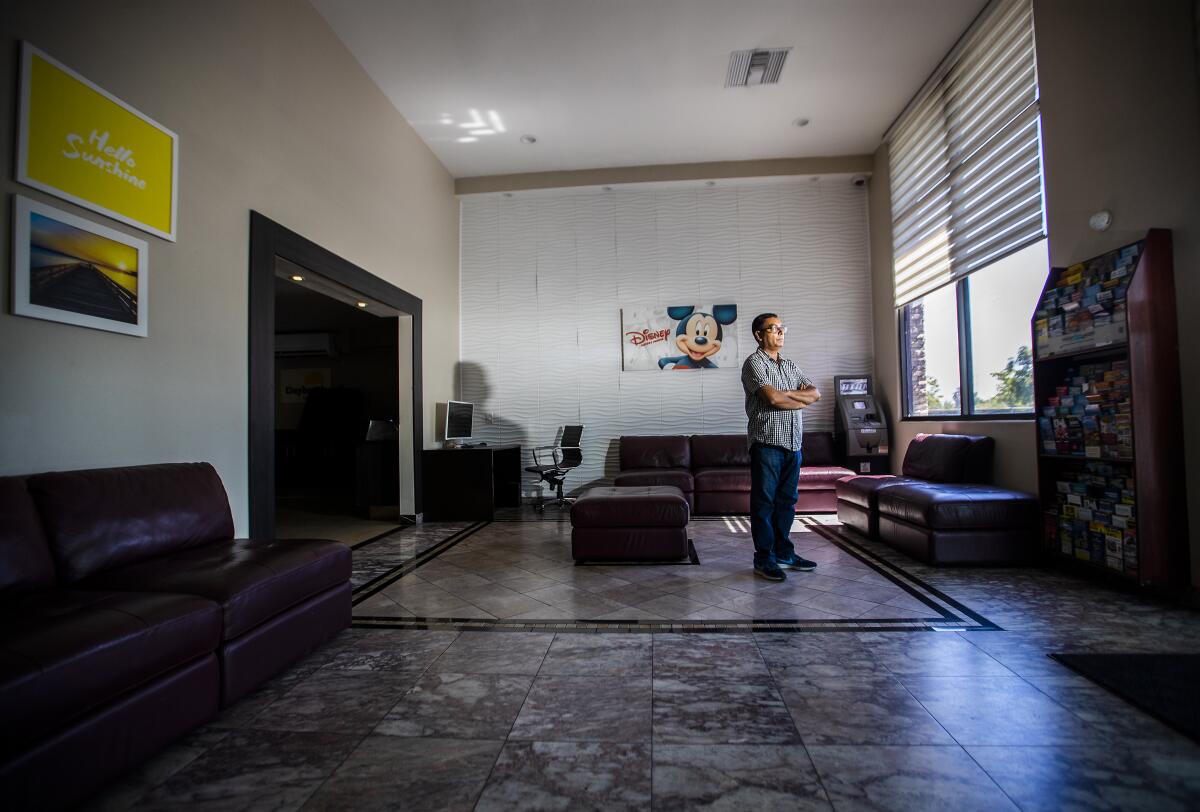
The closure of Disneyland has had ripple effects throughout the city of Anaheim, where it is the largest employer. Unemployment in the city is at 12%, the same as during the Great Recession, according to Mayor Harry Sidhu.
âThis is not a choice between public health and the economy,â he said in a statement. âThere is a safe, responsible middle path ... We need to begin restoring our economy in a way that protects public health and also allows people to support their families.â
Before the shutdown, the Days Inn & Suites by Wyndham Anaheim at Disneyland Park was often booked, full of families enjoying the theme park. Now, the hotel is at only about 20% occupancy, said general manager Ziaul Islam Syed.
Syed helped manage the front desk on Wednesday, a change due to shifting roles during the pandemic. The hotel used to be often fully booked, but now they are barely scraping by, he said.
âWeâre cancelling more bookings than weâre getting,â Syed said.
Karlamangla reported from Los Angeles, Willon from Sacramento and Lai from Anaheim. Times staff writer Taryn Luna contributed to this report.
More to Read
Sign up for Essential California
The most important California stories and recommendations in your inbox every morning.
You may occasionally receive promotional content from the Los Angeles Times.
